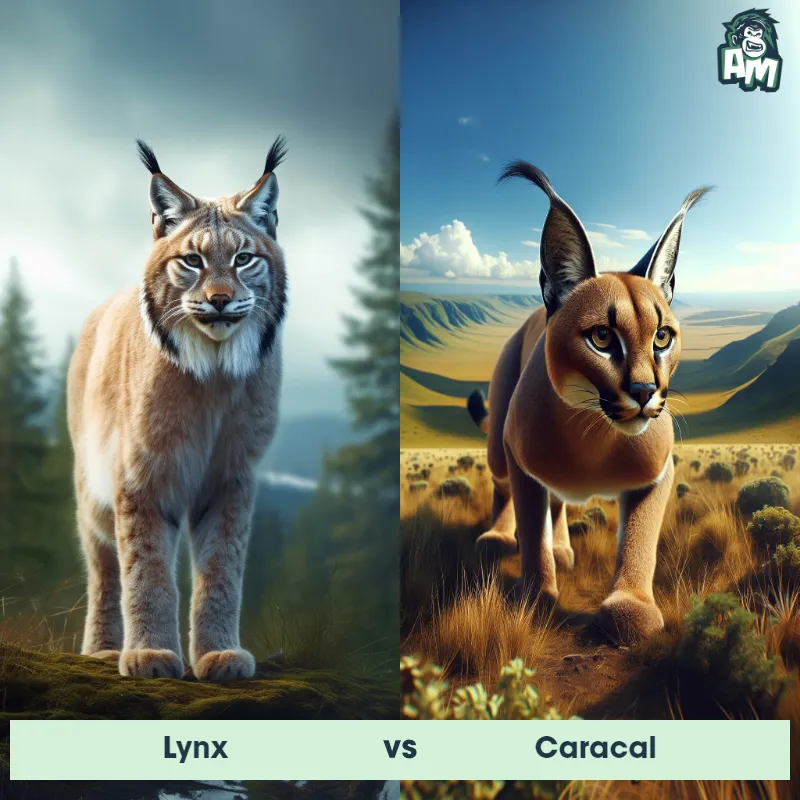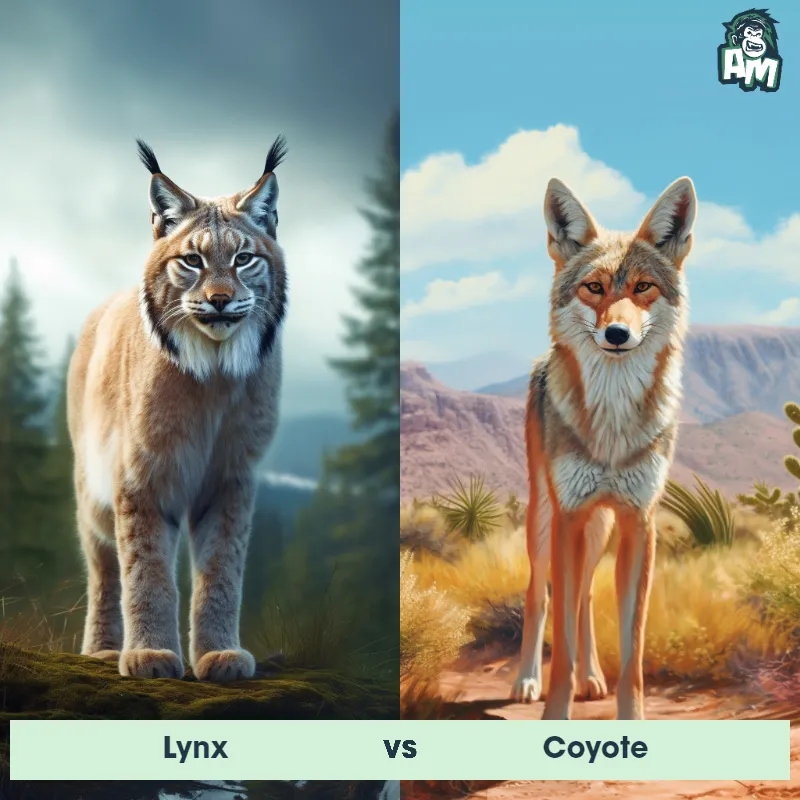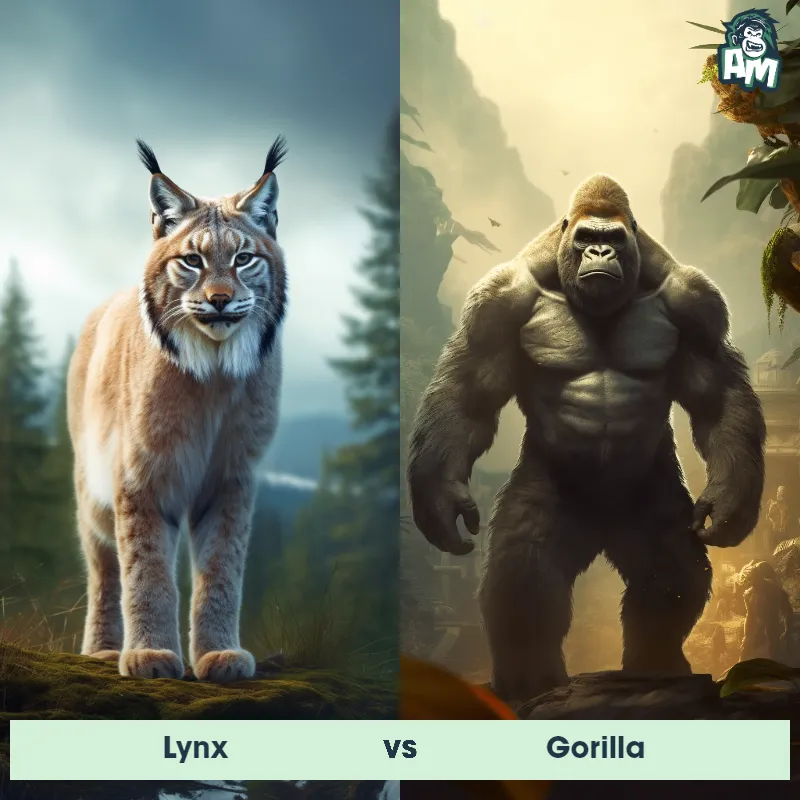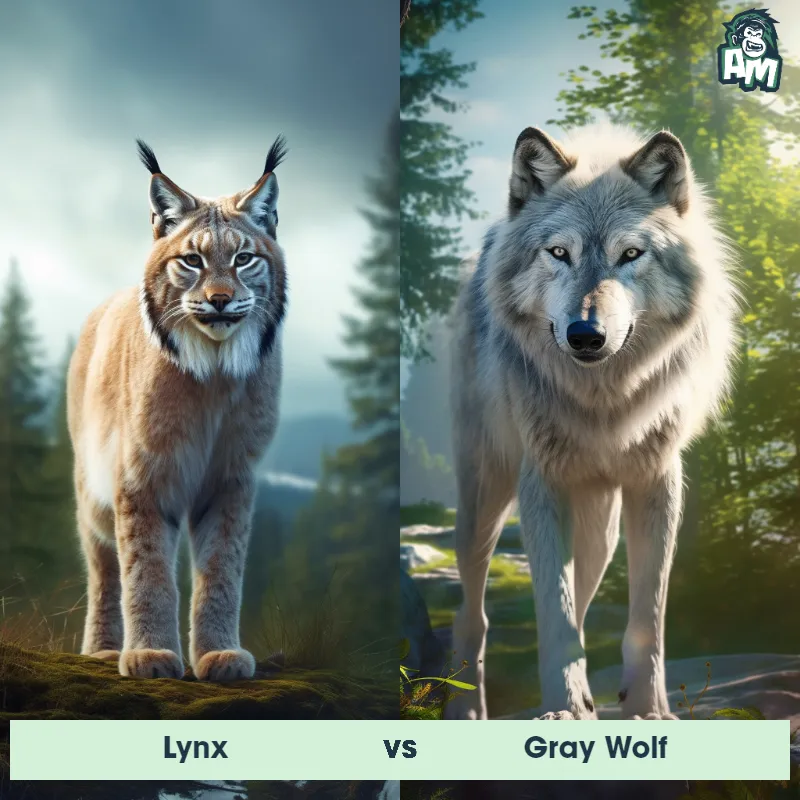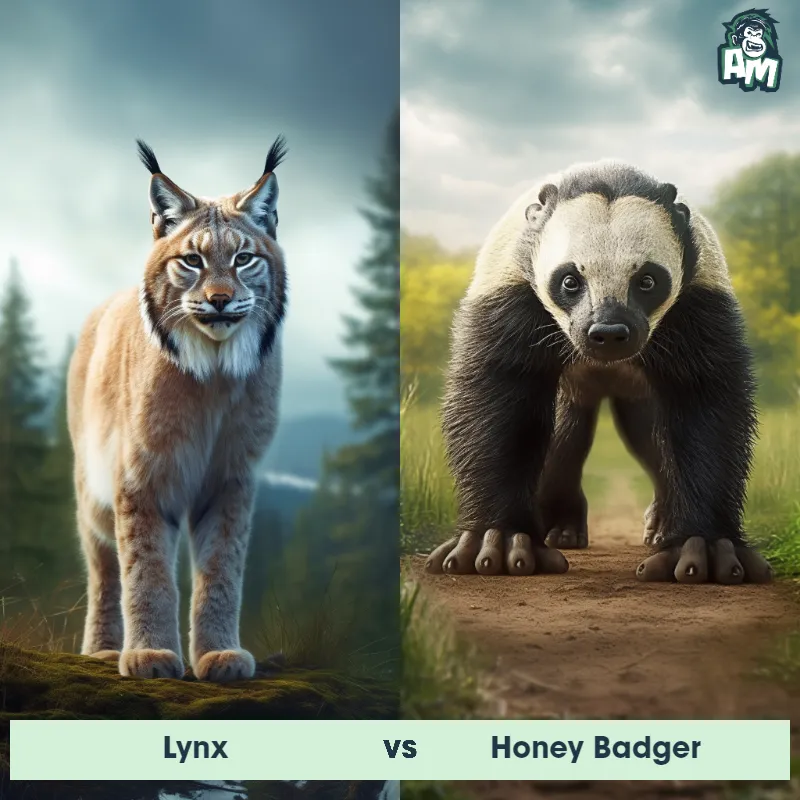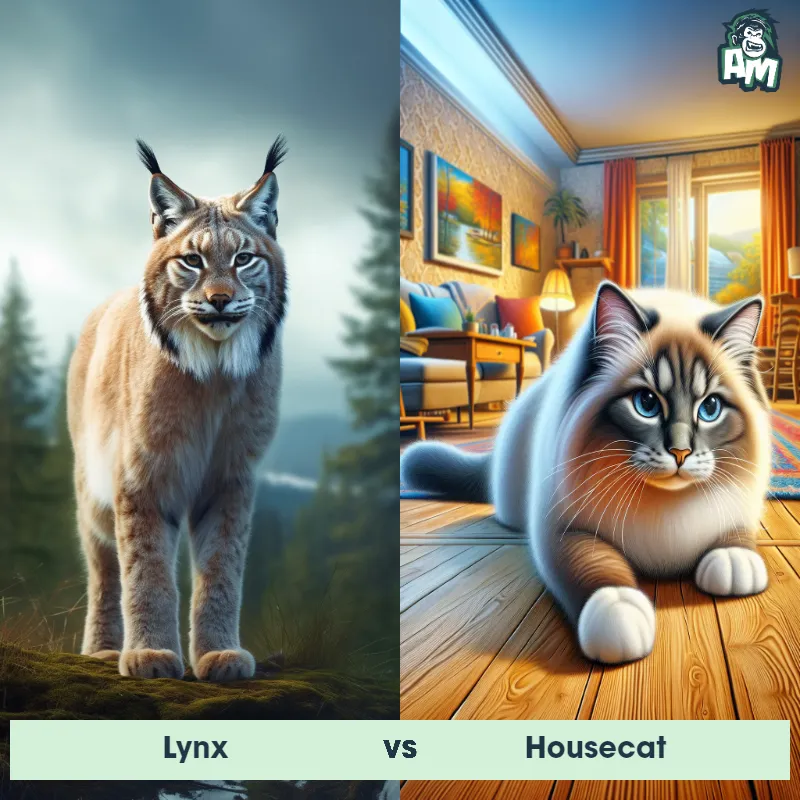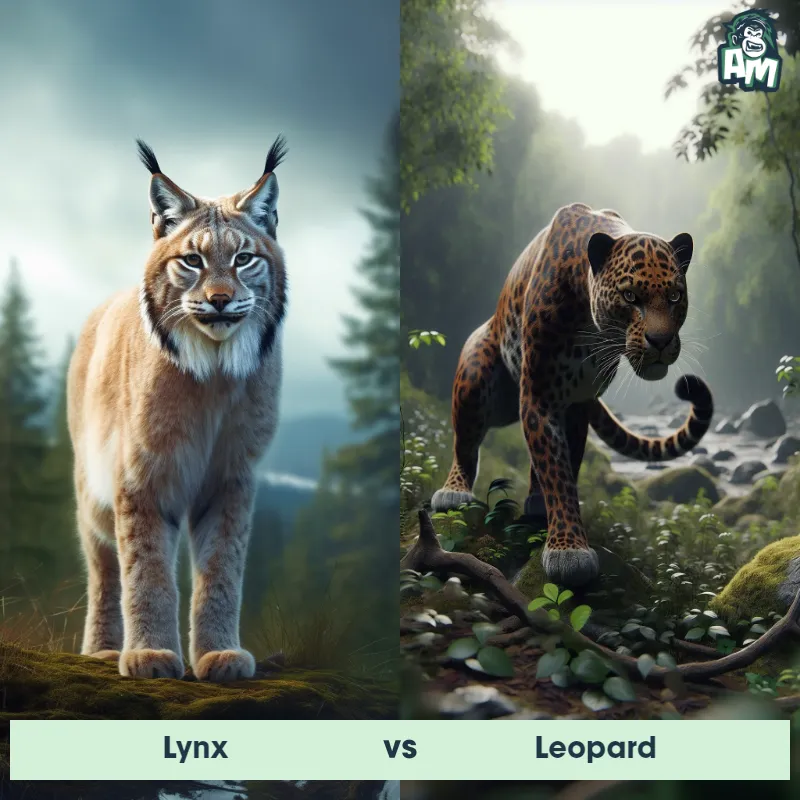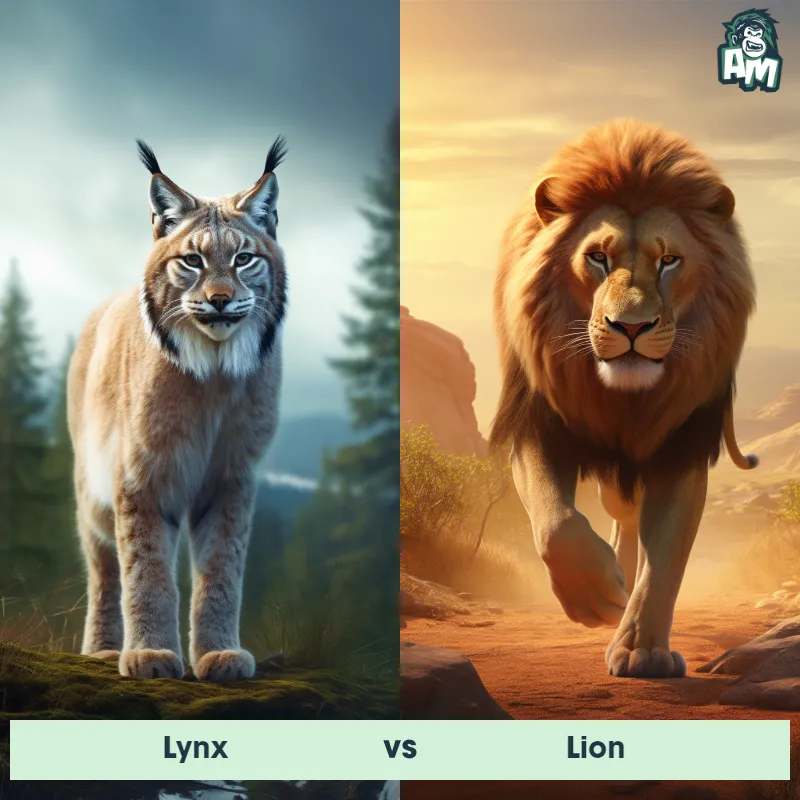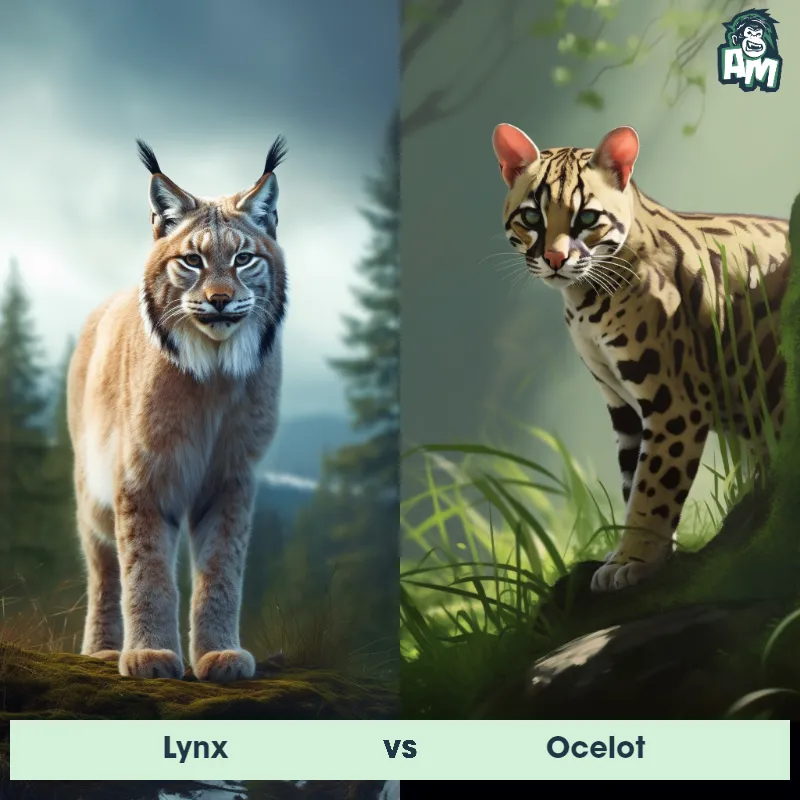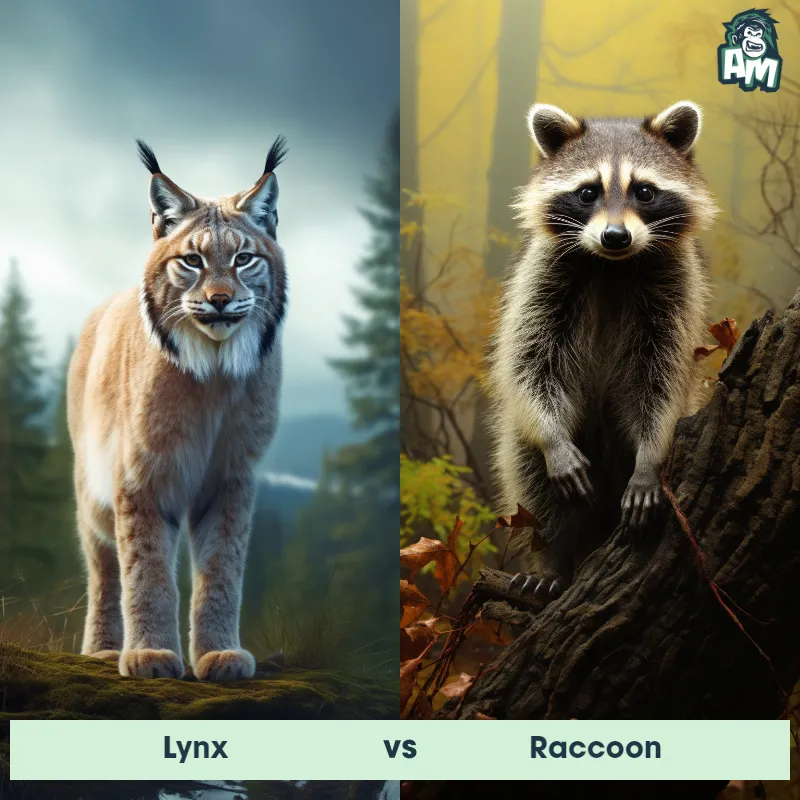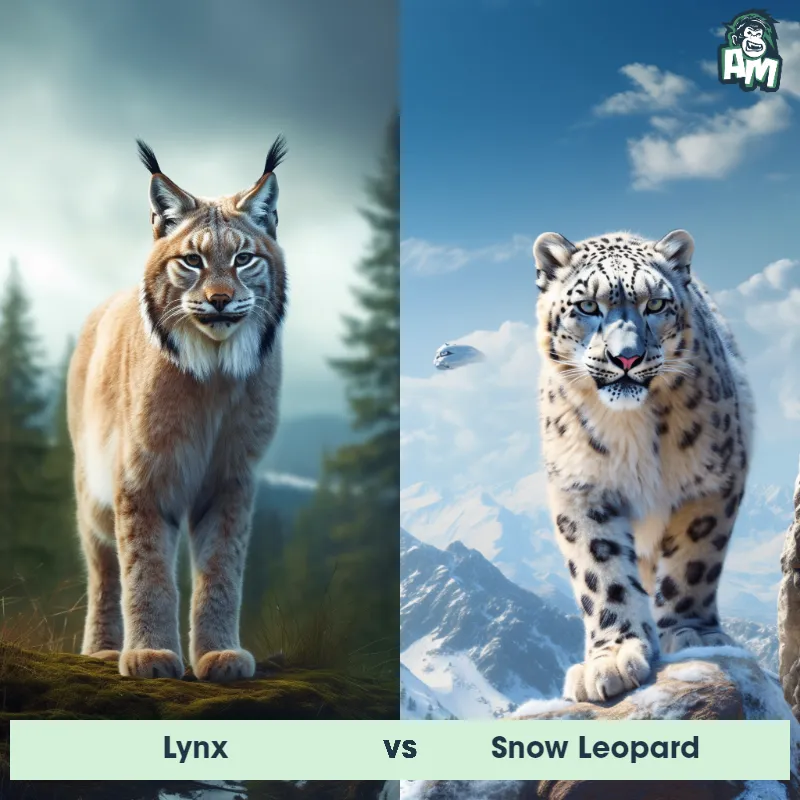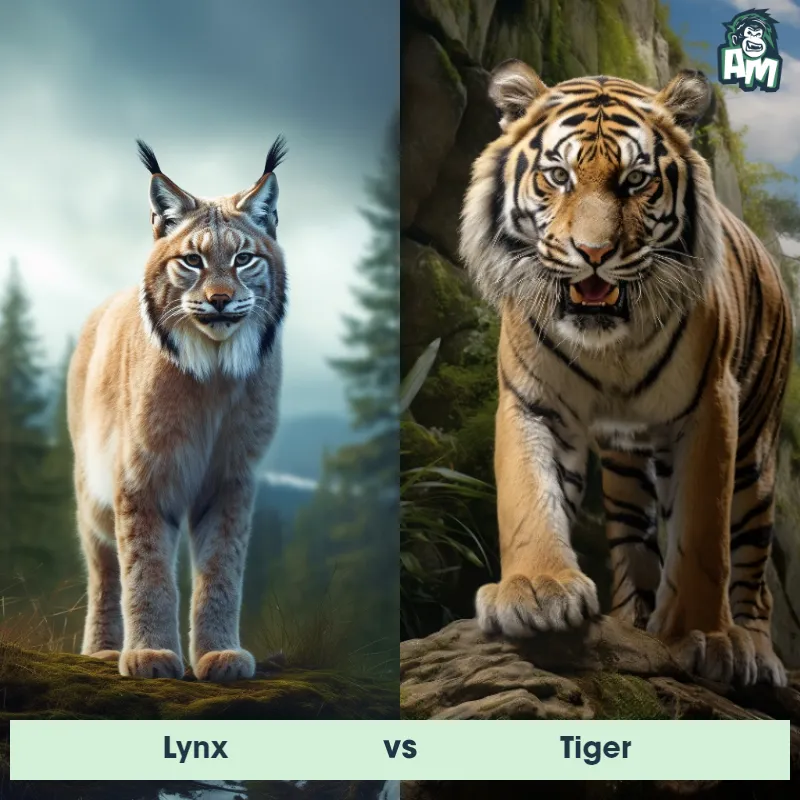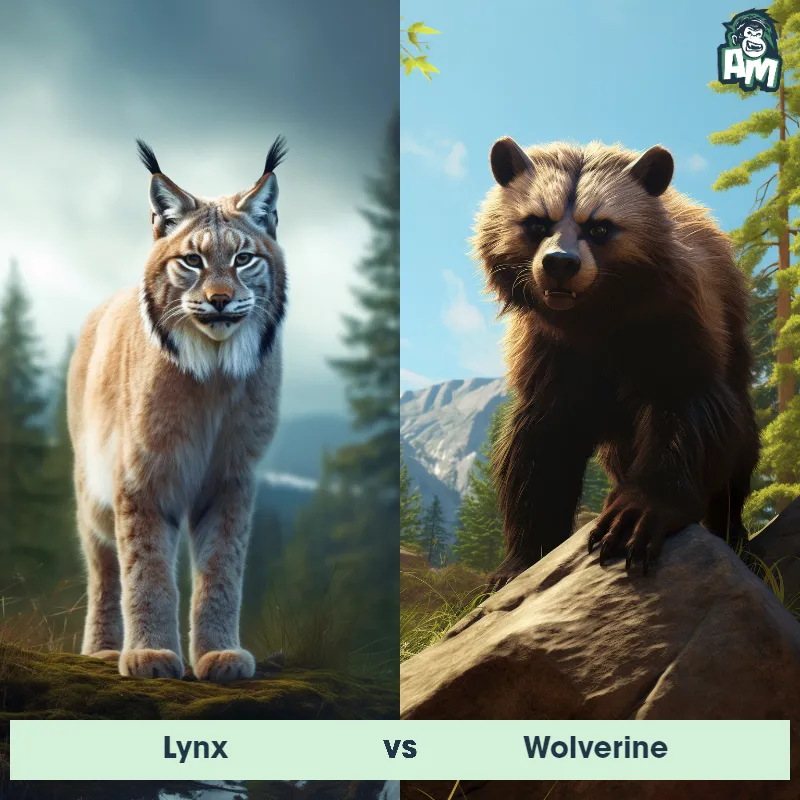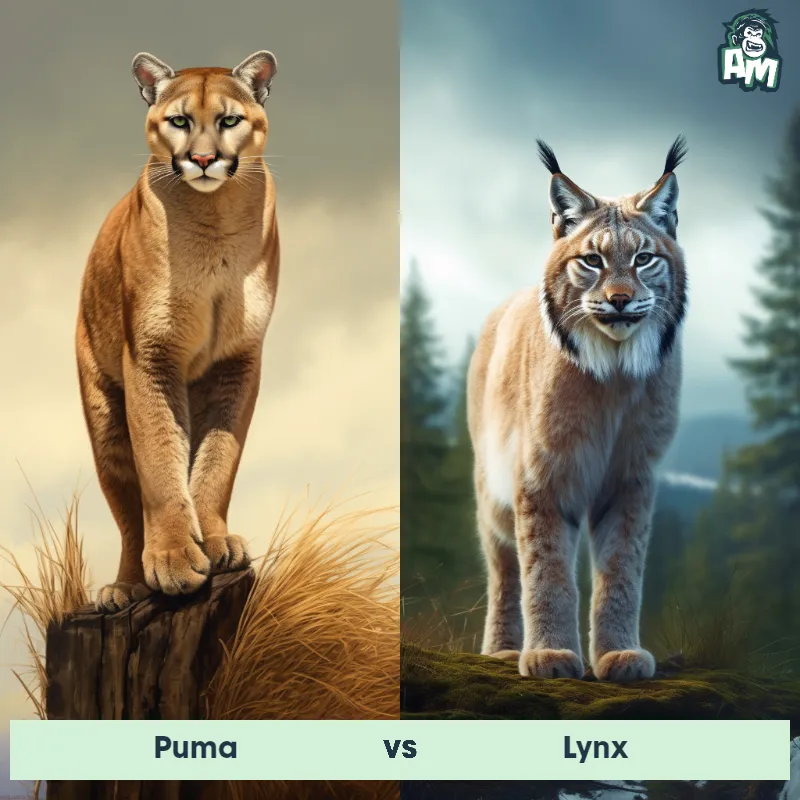The Lynx
The Lynx is a medium-sized wildcat species known for its distinctive tufted ears, short tail, and snowy coat. This elusive predator is widely recognized for its exceptional hunting skills, enabled by its sharp teeth and powerful hind legs. With a muscular build and an average weight of 20 to 30 pounds, the Lynx possesses keen eyesight and hearing that aid in its ability to stalk and pounce on its prey, which primarily consists of small mammals such as hares and rodents.

| Lynx | |
|---|---|
| Size | 18-24 inches (45-60 cm) at the shoulder |
| Weight | 18-24 pounds (8-11 kg) |
| Speed | Speed: 50 mph (80.47 km/hr) |
| Key Strength | Powerful legs and sharp claws |
| Biggest Weakness | Short tail |
| Scientific Name | Lynx |
| Family | Felidae |
| Habitat | Forests and mountainous regions |
| Geography | Europe, Asia, and North America |
| Diet | Small mammals, birds, and fish |
| Lifespan | 10 years - 15 years |

The Lynx
The Lynx is a medium-sized wildcat species known for its distinctive tufted ears, short tail, and snowy coat. This elusive predator is widely recognized for its exceptional hunting skills, enabled by its sharp teeth and powerful hind legs. With a muscular build and an average weight of 20 to 30 pounds, the Lynx possesses keen eyesight and hearing that aid in its ability to stalk and pounce on its prey, which primarily consists of small mammals such as hares and rodents.
Fun Fact: The Lynx has highly specialized hearing, thanks to its large paws that act like snowshoes, enabling it to silently approach its prey without detection.
| Lynx | |
|---|---|
| Size | 18-24 inches (45-60 cm) at the shoulder |
| Weight | 18-24 pounds (8-11 kg) |
| Speed | Speed: 50 mph (80.47 km/hr) |
| Key Strength | Powerful legs and sharp claws |
| Biggest Weakness | Short tail |
| Scientific Name | Lynx |
| Family | Felidae |
| Habitat | Forests and mountainous regions |
| Geography | Europe, Asia, and North America |
| Diet | Small mammals, birds, and fish |
| Lifespan | 10 years - 15 years |
Lynx Matchups
We use AI to simulate matchups between the Lynx and other animals. Our simulation considers size, strength, and natural predatory behaviors to determine the most likely outcome.

Can't find the Matchup you want?
Create Your Own MatchupLynx: Diet, Predators, Aggression, and Defensive Behaviors
What do Lynx eat?
Lynx primarily prey on small to medium-sized mammals such as rabbits, squirrels, and mice. They are also known to hunt larger animals like deer and goats if the opportunity arises. Lynx are carnivorous predators that rely on their stalking and pouncing abilities to catch their prey.
Do Lynx have any predators?
Although Lynx are apex predators in their habitat, they do have natural predators that pose a threat to them. Wolves and cougars are the main predators of Lynx, particularly the young or injured ones. These predators are known to compete with Lynx for food sources and territory.
Are Lynx aggressive?
Lynx are generally solitary animals and can be territorial, especially when it comes to defending their hunting grounds. While they are not inherently aggressive towards humans, Lynx may display defensive behavior if they feel threatened or cornered. It is important to respect their space and avoid provoking them in the wild.
Do Lynx fight?
Lynx are not known to be overly aggressive towards each other, but they may fight over territory, mates, or food resources. These fights are usually brief and intense, with the dominant Lynx establishing its dominance through posturing, growling, and physical combat if necessary.
How do Lynx defend themselves?
Lynx are equipped with sharp claws and teeth that they use for self-defense when necessary. When faced with a threat, Lynx may hiss, growl, or swat at their attacker. They are also skilled climbers and may seek refuge in trees to escape danger. Additionally, their camouflage fur helps them blend into their surroundings, providing protection from predators.
What is the biggest weakness of Lynx in a fight?
Despite their agility and hunting skills, Lynx are not as large or powerful as some of their predators like wolves or cougars. In a fight, their relatively smaller size and strength could be a disadvantage, especially when facing larger or more aggressive opponents. Additionally, Lynx may struggle to defend themselves effectively against coordinated attacks from multiple predators.
Fun Fact: Unlike most other wildcats, the Lynx is known to swim proficiently, using its buoyant body and webbed toes to navigate across bodies of water.
Fun Fact: The striking black tufts of fur on the ears of the Lynx are believed to serve as a visual signal to other lynxes, possibly playing a role in territorial displays or communication during mating season.



